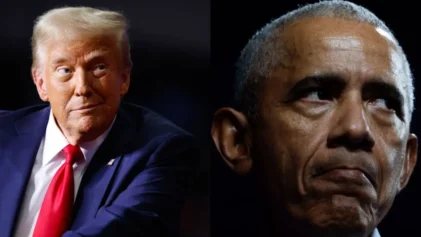A new study released on Tuesday says that American use of drones to target suspected militants in Pakistan has had a “damaging and counterproductive effect” on the country and has resulted in more civilian deaths than previously acknowledged.
The study conducted by law professors at Stanford and New York University, relies on roughly 130 interviews with civilians living in the regions of northern Pakistan where targeted drone strikes have been most frequent. Working with the activist group Reprieve, the team of professors has added to the growing evidence that runs contrary to Obama administration claims that civilian casualties have been carefully held to a minimum. The study shows that numerous civilians have been killed and many more traumatized by the drone strike program.
“Drones hover 24 hours a day over communities in northwest Pakistan, striking homes, vehicles and public spaces without warning,” the report said. “Those living under drones have to face the constant worry that a deadly strike may be fired at any moment, and the knowledge that they are powerless to protect themselves.”
Relying on data compiled by the Bureau of Investigative Journalism, the study alleges that between 2,562 and 3,325 people have been killed in Pakistan since June 2004, and between 474 and 881 of them were civilians.
The heart of the Stanford and NYU report, which is titled “Living Under Drones,” is a close and gripping look at three individual strikes in Pakistan’s Waziristan region, including detailed interviews with 69 survivors, the study authors say.
In one incident in June of last year, a drone operator fired between two and six missiles at a suspect car traveling across Waziristan, the authors say. Five people were killed, all of whom were immediately declared to be “militants” by anonymous Pakistani government officials. Based on their own interviews, and the reports of the Bureau of Investigative Journalism, which has closely reported on drone strikes in Pakistan, the authors argue that the five killed were actually civilians, including a retired taxi driver and a teenaged student.
With recent surveys showing that nearly three-fourths of Pakistanis now consider the U.S. an “enemy,” the authors argue that drone strikes may also be reducing the population’s willingness to collaborate against terrorists.
After years of previously denying the existence of the drone program, or avoiding answering questions about it, President Barack Obama has begun to gingerly address the subject in interviews, mainly in order to promote the rigor with which he approaches the decision to deploy them.
But many outside experts have called into question the Obama administration’s claims about the program and its effects, especially the notion often repeated by administration officials that no civilian deaths have been conclusively linked to U.S. drone strikes.
The Obama administration has also indicated that it considers any “military-aged males” killed in the vicinity of a drone-strike target to be likely militants as well until proven otherwise.
In a recent essay in Foreign Policy, Micah Zenko, a fellow at the Council on Foreign Relations who has closely examined the U.S. use of drones, argued that a claim by John Brennan, Obama’s counterterrorism czar, that “the U.S. government has not found credible evidence of collateral deaths resulting from U.S. counterterrorism operations outside of Afghanistan or Iraq,” was simply not believable.


